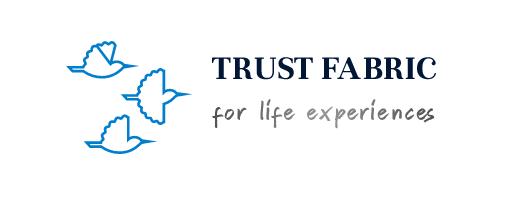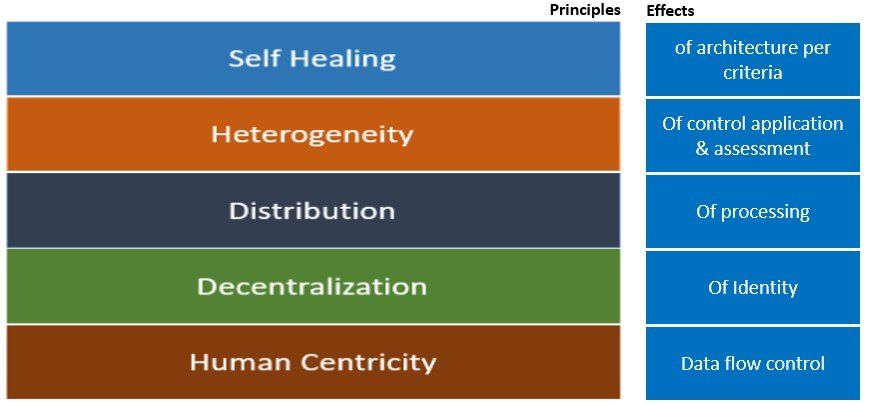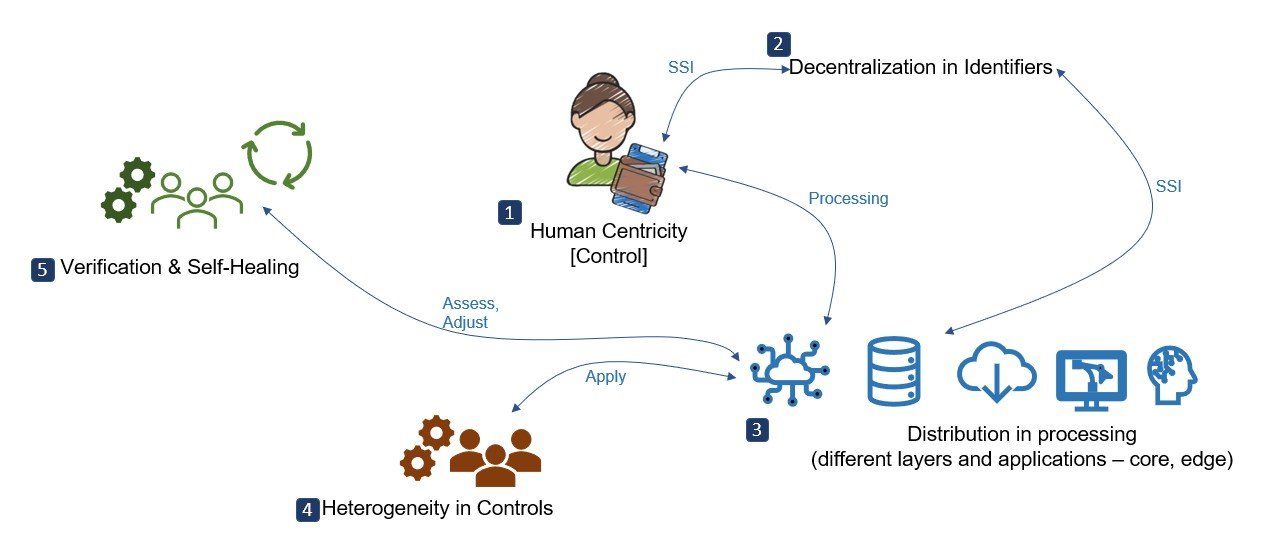
Human Centricity, Decentralization, Distribution, Heterogeneity, Self Healing
Safety and Fairness problems are largely a result of 3 situations
LinkedIn post: https://www.linkedin.com/feed/update/urn:li:activity:7260804728484171776
- Our information is in 100+ places on an average [centralized islands] - These databases are honeypots for hackers.
- We have no control on where our information goes - The information is sold, analyzed and then again collected in centralized databases, many times without our knowledge and consent
- We cannot verify and identify who and what we are interacting with - whether it is an email, a plumber at the door, a person at the other end of a helpdesk or a deep fake; we are unable to verify who we are interacting with.
WOPLLI proposes following 5 guiding principles and assumed baselines for services, technology & platform architecture
We seek to create safety (secure, privacy preserving and without harm), fairness (in costs, treatment, inclusiveness, bias mitigation) and trust (between two or more parties) with these principles along with creating transparency and ability to verify in digital systems.
Human Centricity: Consider a human as central, giving them control on their information and considering them a control boundary for their data. This is also different from consumer or user view. A human may be in different roles, in different age groups and maybe part of a bigger organization (a consuming entity). Build with empathy for a human & betterment of society and enable them to consume an experience quickly with maximum control.
People must be able to interact with machines, things and surroundings on their own terms. Machines and computers must be part of people's natural lives, routines and experiences, instead of people having to be part of machines, computers and datasets.
Decentralization in identifiers: Enable transactions & interactions for humans with the right context and sufficient information for enabling the transactions and no more. We do not want to either ourselves OR enable other businesses to be in the position of ‘unnecessarily’ and ‘unknowingly' to humans, collecting their information and use it for undefined purposes. This will be enabled with decentralized identifiers & especially Self Sovereign Identity (SSI) with verifiable credentials (VC) will provide for the control and data flow. We also expect systems and things (such as IoT or other services) to be managed in a decentralization fashion with DID, SSI.
Distribution in processing: Expect distribution of resources and things in a space, either at the edge or at the core. We must leverage this distribution in various layers for storing & processing information for bringing the benefits of cost savings, resilience & security. We must also recognize this distribution, especially with IoT and other facilities. Such processing needs to become safer.
Heterogeneity in controls: Consider multiple interfaces for connection to services and things from different assessment and control application providers. As an example, in order to meet a certain cyber security or regulatory compliance requirement, controls from different providers may be considered. As another example, in order to train AI algorithms, we will consider data sets from different sources. Heterogeneity will provide benefits of better security, resilience, inclusiveness & bias mitigation.
Verification & Self-Healing: Consider verification & self-healing paradigms implemented at its core. Self-healing in an architecture may happen due to updates in criteria such as regulations, standards or self-determination due to continuous assessment feedback loop or due to human criteria input.
Proposed April 2021
Last updated Oct 2024


